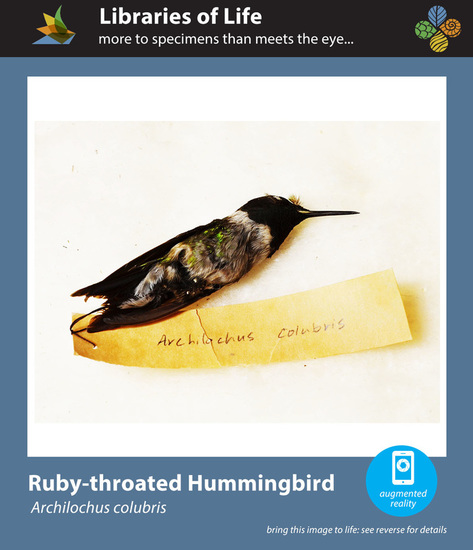The RubY-throated Hummingbird: Did you know?
|
Video credit:
www.youtube.com/MyBackyardBirding Understanding animal behavior is all about observation of a species in the field. Watch this video. Is the throat of this hummingbird red or black? |
Hummingbirds, like many bird species, communicate through a variety of actions, including visual display, physical interaction, chirping, and chattering. However, they also have a rather unique method of communication. Male ruby-throated hummingbirds have iridescent feathers, which are used to attract females and deter other males. These iridescent colors are caused by both pigments and microscopic ridges, which create a grid that reflects different light patterns depending on the distance from the display. This is important in attracting mates, as hummingbirds have excellent color vision and can even see ultraviolet light. Male ruby-throated hummingbirds display their colors and agility to females in daring courtship displays. This display involves diving from heights of up to 50 feet and flying side-to-side in front of the female.
Male and female ruby-throated hummingbirds stay together only briefly after mating and will separate for migration as early as August. Although they can survive chilly nights by entering a state of sleep-like torpor, hummingbirds do not last long in very cold environments. For this reason, most ruby-throated hummingbirds will migrate south across the Gulf of Mexico. While they are in their southern range, hummingbirds replace their old feathers through molting, which is also when young males first grow their iridescent throats. For more information click the Cornell logo below and watch a live WebCam of hummingbirds!
Click to listen to the sound of a Ruby-throated hummingbird.
Credits: Project's Library of Life Lead: Edwin Scholes 3D Imaging: Anne Basham and Adam Chmurzynski Archilochus colubris records
Click the map to explore the iDigBio database |





